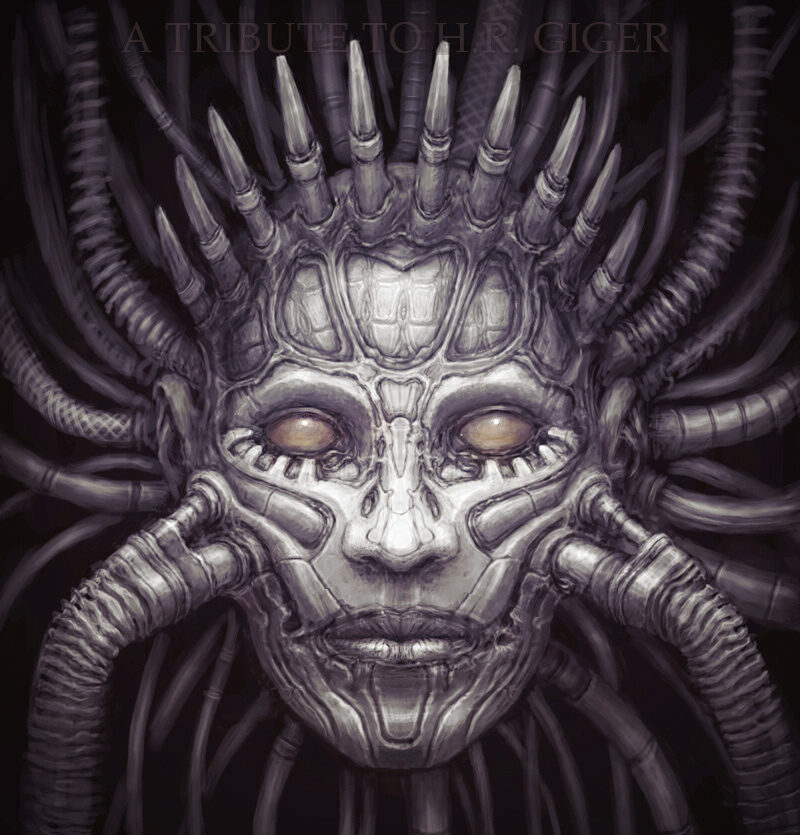SKIN IN THE GAME

Image Used For Representation
There is always a privileging of some sort that gives definition to every Art form, and for the Horror Genre this translates into physical peril being the quilting point that anchors the genre to the many diverse and colorful strands of the Speculative weave. Imperilment here is understood as any crisis that undermines the integrity and vitality of the human body, a narrative focus within the Horror Genre that has come to be labelled “Body Horror.”
The worry about bodily integrity — what scholar Jack Morgan coins the “anxiety of organism” — is always there in our everyday lives as we translate unconscious thoughts into perceptible emotions. Indeed, the Horror Genre draws energy from our species’ awareness of vulnerability, a “winter is coming” sensibility we cannot deny even with our conscious highlighting of mind over matter, of the intellectual over the biological.
Demonstration of the human anxiety of organism can be found in one of the greatest success stories of contemporary consumer capitalism: the healthcare and personal beauty industry.
An old idiom claims that beauty is only skin deep, but even so the amount of money being spent on looking good tells us there’s something far deeper than vanity at play here. A recent analysis from the McKinsey marketing firm suggests that the “dynamic” global marketplace for beauty products alone is expected to reach approximately US$580 billion by 2027, with skincare products and cosmetics accounting for the a large part of these sales. (I wonder if these figures include the mortuary industry’s demand for cosmetics.)
Although many might mock the striving to be gorgeous as little more than painting lipstick on a pig, the attention given to cosmetics makes all the sense in the world when you take into account the arguments advanced by philosopher Julia Kristeva in her now-classic 1980/1982 book “Powers of Horror.” The philosopher begins her book by noting that the “abject and abjection are my safeguards” from the sense of meaningless that accompanies a loss of self-identity.
At the top of her list of abject things is the human corpse, but equally important for our contemplation of Body Horror are the “wastes” that come out of our living human bodies: the semi-solids we send to the cesspool, the fluids that accompany injury and infection, or even the moisture that comes with exertion or stress. These abject excretions — the blood, sweat, and tears that have become so idiomatic — are significant insofar as the extreme loss of them eventually results in the creation of the greatest abjection: the human cadaver.
The cadaver is abject because it represents the ultimate loss of self-identity. “It is no longer I who expel,” Kristeva says, for with the death of the body the entirety of “I” is expelled. “The border has become an object. How can I be without border?” (2)
The idea of “boundaries” and “borders” is key to understanding the omnipresence and effectiveness of Body Horror. As Kristeva sees it, the living human body is the self, a moving collection of organism held together by skin, the final boundary.
Skin maintains the barrier between our “inside” and “outside.” It shapes us into visibly recognizable subjects identifiable to ourselves and others. When the body dies, the skin loses integrity as the dermal border breaks down and cannot maintain a recognizable shape or hold back the internal organic material that once powered life. The cadaver begins with a few small leaks and ends in a splash, leaving stains that can never be cleaned from the carpet.
This is why the external presence of “blood and guts” is viewed as abject: those organic elements are not supposed to cross the boundary of skin and see the light of day. When they do make their way out, as so often happens in Body Horror narratives, the squeamish might exclaim: “That’s gross!” This explains the effectiveness of the gross-out in Horror cinema.
And here too is where the commercial success of the cosmetics and hygiene products industries becomes understandable. Cleanliness of body signifies the maintenance of the boundary that supports the subject, the “I” and “You.”
Every beauty product advertisement anchors the “I” to “vitality.”
Unfortunately, the vitality of healthy skin is too easily turned to pallor when sickness swaggers into the beauty parlor. Illness disrespects our organic boundaries, and if untreated the constant onslaught of organic impertinence can lead to the ultimate abjection that is death and the loss of the self.
The outward display of illness in the human body can trigger discomfort in the healthy observer who may seek to counteract this anxiety with the unhealthy behavior of “victim shaming.” This is the subject of Susan Sontag’s 1978 book “Illness as Metaphor” (extended into the 1989 publication “AIDS and Its Metaphors”) in which the cultural theorist bemoans what she saw as a socially sanctioned “condescension” directed by the healthy to the unhealthy, especially those sufferers of long-term ailments such as cancer or AIDS.
While Sontag sees this haughty “you did this to yourself” finger pointing as resulting from the larger cultural “denial of death,” Kristeva reminds us that the fear of death is at heart the anxiety of losing our self-identity. “It is … not lack of cleanliness or health that causes abjection but what disturbs identity, system, order. What does not respect borders, positions, rules” (2).
Many cultures maintain a strict expectation that we will struggle to keep at bay any sign of biological debility, whether these be happy wrinkles or liver spots. Or even dust.
Yes, dust.
In a world where the anxiety of organism leaves us leery about anything that signals decline, dirt equals death.
There even exists in Christianity a theological basis for this linkage. When Saint Paul wrote that “the wages of sin is death,” he was building upon the idea of “sin” that had been symbolized centuries earlier in the Hebrew book of Isaiah as bloodstained hands: “Wash you, make you clean,” commands the prophet (Isaiah 1:15-16, King James Version).
Here is where classic Gothic Horror stories have been successful in tweaking our discomfort with uncleanliness. In Bram Stoker’s “Dracula” (1897), Jonathan Harker is appalled by his vampire host’s foul breath. When he later opens the vampire’s coffin, Harker finds Dracula bloated like a leech, too satiated to even consider the most basic hygiene: “The mouth was redder than ever, for on the lips were gouts of fresh blood, which trickled from the corners of the mouth and ran down over the chin and neck.”
Discussions of Mary Wollstonecraft Shelley’s “Frankenstein” (1818) make much of the titular protagonist’s abandonment of his “creation” after perceiving the animated creature as “ugly,” but it bears noting that Frankenstein himself was physically affected by his two-year obsession with work. “Sometimes I grew alarmed at the wreck I perceived that I had become,” he says. “My cheek had grown pale with study, and my person had become emaciated with confinement.”
In the category of Body Horror the idea of dirt and dishevelment as signifiers of degeneration can also be projected beyond the human form into the larger environment. This can begin with portrayals of the simplest signs of squalor in the home, says Jack Morgan. “Housekeeping, in its deepest implications, is a primal imperative, part of our warding off of abjection — of decay, rot, squalidness.” The suggestion, of course, is that the health of the homeowner is reflected in the cleanliness or neatness of the dwelling place. “Places that evidence the lack of this critical endeavor bespeak incursions of morbidity into the communal body” (Morgan 186).
The perfect example is Edgar Allan Poe’s 1839 short story “The Fall of the House of Usher,” in which the architectural integrity of the family mansion mirrors the health of its owners. In this text, both bodies rapidly decline toward the ultimate abjection that is the loss of self, as the human protagonists die and the house itself collapses.
In fiction and film, the projection of dirt and disarray as signs of decay often extend beyond the portrayal of a grubby home to encompass entire communities. The areas of “landscape, objects, and buildings are extensions of body-psyche,” says Morgan. The local “neighborhood” in decline signifies a loss of vitality that can spread and infect even the national body.
This brings us to the Dystopian Narrative, a category of Speculative Fiction in which a sociopolitical structure is depicted as failing in extreme and recognizable ways. Not to be confused with “end of the world” Apocalyptic Fiction, the Dystopian Narrative builds upon displays of still-functioning but ultimately unhealthy bureaucratic systems. In these works the sociopolitical body is sick. The Dystopian Narrative is Body Horror writ large.
Whether it be the individual body or the social organism, the effectiveness of Body Horror remains inextricably tied to the terror of acknowledging how much of “the self” relies upon the organic aspect and the worry that without our bodies, we are nothing.
Citations
Kristeva, Julia. Powers of Horror: An Essay on Abjection. Leon S. Roudiez, Trans. New York: Columbia UP, 1982.
Poe, Edgar Allan. The Fall of the House of Usher. 1839. Available Online: https://www.gutenberg.org/files/932/932-h/932-h.htm
Shelley, Mary Wollstonecraft. Frankenstein: or, The Modern Prometheus. 1818. Available Online: https://www.gutenberg.org/files/84/84-h/84-h.htm
Sontag, Susan. Illness as Metaphor and AIDS and Its Metaphors. Combined. New York: Picador, 1978/1989.
Stoker, Bram. Dracula. New York: Grosset & Dunlap, 1897. Available Online: https://www.gutenberg.org/files/345/345-h/345-h.htm
McKinsey & Company. “The Beauty Market in 2023: A Special State of Fashion Report.” McKinsey.com. 22 May 2023. Online. https://www.mckinsey.com/industries/retail/our-insights/the-beauty-market-in-2023-a-special-state-of-fashion-report#/
Morgan, Jack. Biology of Horror. Carbondale: Southern Illinois UP, 2002.
Also, read Wyrd Words: Personal Reflections On The Art Of Horror (PART IV) “Skin In The Game” by Grandfather Hu published in The Antonym:
Wyrd Words: Personal Reflections On The Art Of Horror (Part IV)— Grandfather Hu
Follow The Antonym’s Facebook page and Instagram account for more content and exciting updates.


























0 Comments